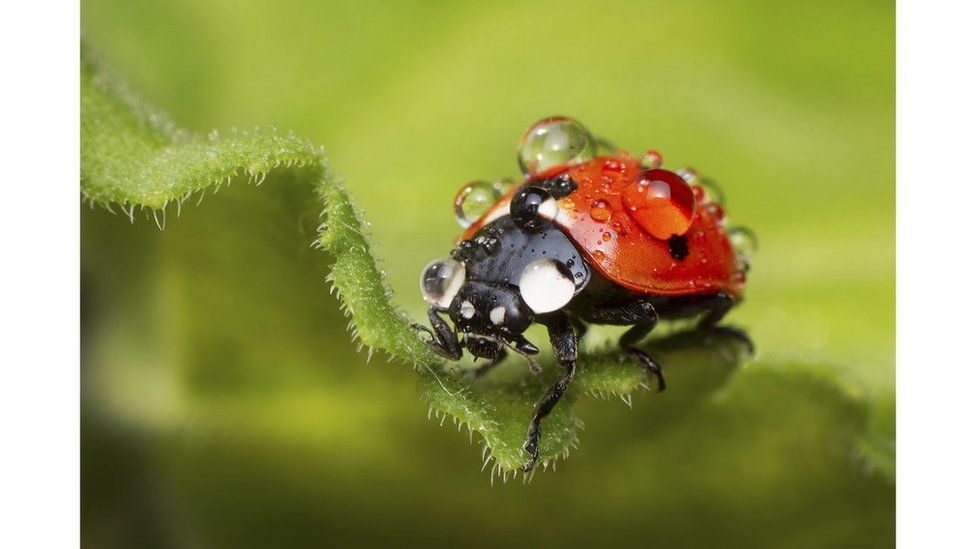In pictures: Ladybirds, geckos and gorillas
- Published

The winners have been announced in this year's Royal Photographic Society's International Images for Science competition. The contest was open to both amateur and professional photographers, who could submit entries in three age-specific categories: 17 and under, 18–25 and 26 and over. This shot of a ladybird covered in raindrops was entered by Mostafa Ghroz.
Image source, Phred Petersen
The competition called for submissions covering all aspects of science from medicine and zoology to engineering and astronomy. This shot of a camping stove heat plume by Phred Petersen won the gold award in the 26 and over category.
Image source, Anup Deodhar
The judges selected 100 images from more than 2,500 entries. Anup Deodhar was awarded the silver medal in the 26 and over section for this photo of a fan-throated lizard in Maharashtra, India.
Image source, Alex Class
The bronze award in the same category went to Alex Class for this long-exposure image of a bridge at night.
Image source, Teresa Zgoda
Teresa Zgoda triumphed in the in the 18-25 age group with this gold medal-winning shot of an Obelia hydroid.
Image source, Jessica Chatburn
This year 450 entries came from the 17 and under age group. Jessica Chatburn was awarded the gold medal for this shot of sea nettle jellyfish (Chrysaora fuscescens).
Image source, Pedro Jarque
The competition judges had one criterion – that the images needed to be visually appealing but also have a science story to tell. Pedro Jarque, a photographer from Lima, Peru, submitted this gorilla family portrait.
Image source, Hiep Nguyen
Other amazing entries included this shot of water droplets caught on a spider's web, magnifying the flora behind it. The picture, titled Miniature World, was made by Hiep Nguyen.
Image source, Pier Luigi Dodi
A nine-month-old male Kurzhaar dog with hyperplastic persistent pupillary membrane (HPPM) was the subject of Pier Luigi Dodi's entry.
Image source, Ian Cook
Ian Cook entered this image of a New Caledonian crested gecko moistening its eye. Geckos live in warm regions the world over. With about 1,450 known species, they account for 25% of all known lizard species.
Image source, Don Komarechka
A freezing bubble created by mixing soap with invisible ink was photographed by Don Komarechka.
Image source, Richard Beech
Richard Beech's entry captured colourful paint bouncing to the vibrations of music on top of a sound speaker.
Image source, Matt Doogue
"Last year my garden flooded, as it does every year, and I noticed an ant colony moving nest sites, " says photographer Matt Doogue. "I was lucky enough to capture these ants transferring larvae."
Image source, Anthony Cooper
Sawfly larvae devour a leaf in Anthony Cooper's entry.
Image source, Yevhen Samuchenko
The Milky Way is pictured above the clouds in the Himalayas in Nepal by Yevhen Samuchenko. The 2016 International Images for Science exhibition runs until 17 October at The Crystal, Royal Victoria Docks, London, before touring the UK.